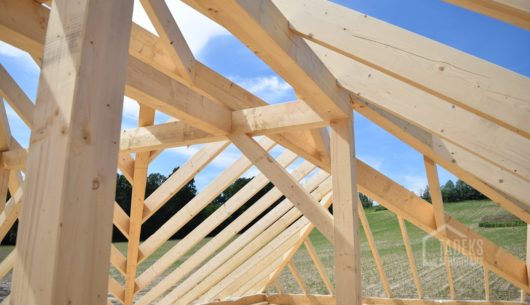Blog
What foundations for a frame house?
When we decide to build a frame house and we already have a design of our dream “four corners” that meets our expectations, the next decision to be made is to choose the right foundations. The foundation of the building is important because any shortcomings in this area will be very difficult to fix later. Therefore, it is not the price of a given solution that should matter, but the appropriate adaptation to our needs and the conditions on the plot. So what foundation for a frame house can you choose?
Table of contents
- Foundations for a frame house – what do you need to remember?
- Which foundations for a frame house to choose?
- How much does it all cost?
Foundations for a frame house – what do you need to remember?
The most important feature of frame houses is their lightweight construction. Regardless, this type of building requires a proper foundation. The foundations of each building must properly transfer all loads resulting from the weight of the building to the ground. Therefore, timber frame houses are mainly built on the following types of foundations:
- strip foundations (also popular in the construction of brick houses, but in comparison they can be narrower and lower);
- foundation slab;
- pole foundation.
However, the above choice does not depend only on our preferences or the advantages of a given technology, but also on:
- geological conditions prevailing on our plot (the type of substrate requires appropriate geological surveys, which will show, in addition to the characteristics of the land itself, also the type of water management on the plot);
- slope of the land (then levelling works are necessary);
- the desire to have a basement under the entire building or part of it.
If the ground conditions do not limit us in terms of the type of foundations, then before choosing which foundation for a frame house will be the best, it is worth taking a closer look at each of these types.

Which foundations for a frame house to choose?
- Strip foundations – strip foundations that are sufficiently wide and adapted to the design of the building require very good bearing capacity of the soil. For proper protection of the building against moisture, they require special waterproofing. Strip foundations are made directly under the planned load-bearing and internal walls of the house. Concrete can be poured directly on the ground or in special formwork. In the case of lightweight structures, no additional reinforcement is required, but it will always depend on the ground conditions and the size of the building we want to build.
- Foundation slab – is poured in the form of one slab with the area of the entire house. It is most commonly used in the case of small houses built on load-bearing land. It requires prior preparation of the ground surface by removing the layer of humus and laying a primer and drainage layer in the form of gravel or coarse sand. A base layer is poured on top of it, and then, after the reinforcement is made, the entire structure is concreted. It is characterized by a fast construction time.
- Column foundation – characterized by lightness adapted to small frame houses, including Canadian type. They can be used in the case of poor ground conditions. In the case of such foundations, the house rests on ground beams, which are arranged on densely spaced columns.
How much does it all cost?
The key when choosing a given type of foundations for a frame house is their construction costs. What is the approximate price of the foundation of the building? It is practically impossible to determine. Prices can reach several to several dozen thousand zlotys, and will depend primarily on the type of land and the design of the house itself that we want to build, which will most often affect the type of foundations we choose. However, it is important not to save on the foundations. However, making foundations for a frame house will always be cheaper than in the case of traditional brick houses.
We also encourage you to check out an interesting blog article: what is a modular house?